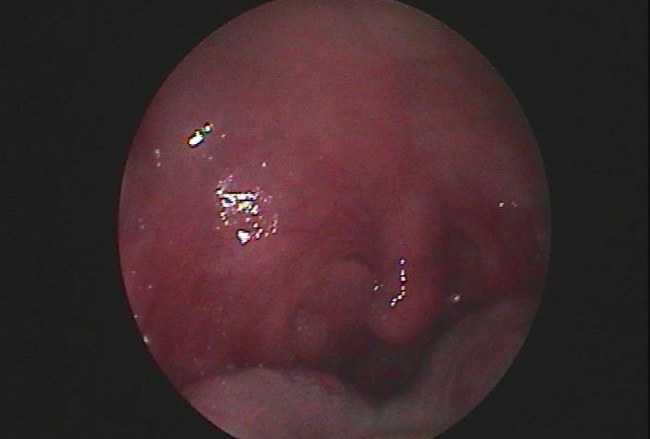Complications
A diffuse erythematous rash, which is a manifestation of delayed-type skin reactivity to pyrogenic exotoxin (erythrogenic toxin, usually types A, B, or C) produced by Streptococcus species.
Characteristically the rash blanches with pressure and has multiple small papules. It generally starts on the head and neck, and is associated with circumoral pallor and a strawberry tongue. It subsequently spreads to the trunk, sparing the palms and soles, and is more marked over the skin folds.
Although a rare complication (occurring in 0.4% of untreated patients in the first 14 days after the sore throat), it has been shown that antibiotics reduce the risk by a half when compared with placebo.[28]
A benign, self-limiting, and common complication of acute tonsillitis. Antibiotics reduce the risk of acute otitis media by two-thirds compared with the risk of acute otitis media in patients not prescribed antibiotics when compared with placebo.[28]
The risk of peri-tonsillar abscess (quinsy) in studies is about 2% in the first 2 months after an episode of acute tonsillitis. Antibiotics reduce the risk of peri-tonsillar abscess by 85% compared with those taking placebo.[28][53] A Cochrane review found very low-quality evidence that incision and drainage of peri-tonsillar abscesses may be associated with a lower chance of recurrence than with needle aspiration.[54]
The characteristic symptoms of retropharyngeal abscess include spiking fever, neck pain (especially on movement) or torticollis, and dysphagia.[Figure caption and citation for the preceding image starts]: Right-sided peritonsillar abscessFrom the collection of Dr Eleftherios Margaritis [Citation ends].
A very rare but life-threatening condition characterised by rapidly progressing multiple organ failure and shock associated with an exaggerated inflammatory reaction to streptococcal antigens.
In a December 2022 UK Health Security Agency (UKHSA) report, rates of invasive group A streptococcus (iGAS) disease (which includes streptococcal toxic shock syndrome and necrotising fasciitis) in England were higher than expected for the time of year.[55]
The relatively higher rates of iGAS in children during the 2022-2023 season may reflect increased rates of a preceding viral infection (including respiratory viruses and chickenpox). Clinicians are advised to maintain a high index of suspicion, as early recognition and prompt initiation of specific and supportive therapy for patients with invasive GAS infection can be life-saving.[55]
A potentially serious autoimmune complication of acute streptococcal tonsillitis. It manifests itself with arthritis, carditis, chorea, subcutaneous nodules, and erythema marginatum.
Although it has all but disappeared in developed countries (<1:1,000,000), it is the cause of significant morbidity and mortality in developing countries.[13]
It has been shown to be preventable by the use of antibiotics. However, its low incidence renders their routine use in low-risk populations (i.e., in developed countries) unjustified.[28]
The relationship between obsessive-compulsive disorder or tics/Tourette's syndrome in childhood and antecedent group A streptococci is unclear. Paediatric Autoimmune Neuropsychiatric Disorders Associated with Streptococci (PANDAS) syndrome is controversial and not listed as a neuropsychiatric disease in the Diagnostic and Statistical Manual of Mental Disorders. Its existence is not fully accepted.[56]
Use of this content is subject to our disclaimer